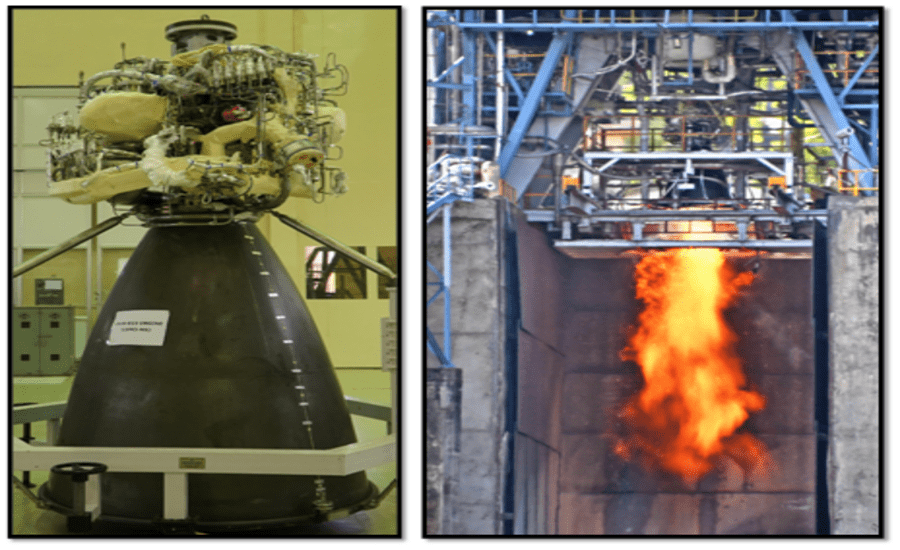New Delhi: In a remarkable achievement, ISRO has announced that its CE20 cryogenic engine has successfully carried out a bootstrap mode start — meaning the engine could start up under vacuum conditions without relying on an external start-gas system. This marks a global first in cryogenic engine testing.
The development is important because the CE20 powers the upper stage of the launch vehicle LVM3 (Launch Vehicle Mark-3) and this new capability gives ISRO greater flexibility for future orbital missions.
What is the ISRO CE20 Cryogenic Engine?
The CE20 is a high-thrust cryogenic engine developed by ISRO’s Liquid Propulsion Systems Centre (LPSC) for use in the upper stage of the LVM3 rocket.
- It uses liquid hydrogen (LH2) as fuel and liquid oxygen (LOX) as oxidiser in what is known as a gas-generator cycle.
- It is designed for thrust levels in the range of about 19 to 22 tonnes in vacuum — already qualified for flight.
Because of its role in heavier-lift missions and potential human spaceflight (e.g., the Gaganyaan programme), enhancements like restart capability and bootstrap start are significant.
What Is “Bootstrap Mode Start”
Bootstrap mode start refers to the engine being able to start and reach steady-state operation without an auxiliary start-gas or separate start-system. Instead, the engine’s own systems (thrust chamber ignition, gas generator, turbopumps) build up from tank-head conditions to full operation.
Indian Space Research Organisation achieved a major milestone: the CE20 Cryogenic Engine demonstrated successful boot-strap mode start, igniting and running without any auxiliary start-gas system under vacuum test conditions.
— ISRO (@isro) November 19, 2025
For more information visithttps://t.co/401OBeEd0c pic.twitter.com/DRnzUUKviP
This capability means reduced complexity, weight and possibly increased reliability in the engine’s start-sequence. It also enables restart ability during orbit — meaning the engine could fire, shut down, and fire again — which is crucial for missions involving multiple satellite drop-offs or complex orbital insertions.
According to ISRO, this is likely the first time in the world a gas-generator cycle cryogenic engine has demonstrated such bootstrap mode starting without any auxiliary start-up system.
The Test – How It Was Done
The test was conducted under vacuum conditions at the High-Altitude Test (HAT) facility of ISRO’s Propulsion Complex in Mahendragiri, Tamil Nadu.
The duration was around 10 seconds during which the thrust chamber ignited, the gas-generator started under tank-head pressure, and turbopumps were activated without a separate start-gas system.
After ignition, the engine built up to steady-state operation in that bootstrap mode. This demonstrates that the engine’s start sequence can rely solely on its internal mechanisms — a key milestone for ISRO.
Key Implications of ISRO CE20 Cryogenic Engine for India’s Space Programme
- With this achievement, India strengthens its capability to launch heavier payloads and carry out more complex missions. The LVM3 rocket becomes more versatile.
- The bootstrap start and restart ability are stepping stones toward human spaceflight applications under the Gaganyaan programme and other future missions.
- It enhances global competitiveness for ISRO in the commercial launch market — more flexibility means more attractive capability.
- Technologically, this underlines India’s growing expertise in cryogenic engines and advanced propulsion systems.
What’s Next?
- ISRO will integrate these tested capabilities into flight-qualified hardware and upcoming missions, ensuring readiness for actual launches.
- Further tests for longer duration bootstrap starts and full mission simulations may follow to validate sustained performance and reliability.
- The next step could include actual in-flight restart tests of the CE20 engine, enabling even more advanced mission profiles.



























